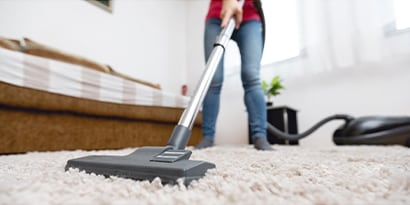-
How to Handle Outdoor Gear for Better Indoor Air Quality
Whether you’re hiking, camping or grilling at home, these seven tips will keep your indoor air fresh this spring.
Spring has arrived, and along with longer days and warmer temperatures, our favorite outdoor activities are back in season. Whether your al fresco pastime of choice is hiking, camping or grilling, read on for seven tips to properly handle and store your outdoor gear for better indoor air quality.
Spring clean your gear
If you live in a state with distinct warm and cold seasons, chances are your outdoor gear hasn’t seen the light of day in months, and likely gathering a layer of dust. Before the first use of any of your equipment this spring, wipe it down outside to avoid dust particles being released into your indoor air. At the end of the season, clean it again before storing for next year.
Dry your tent before storing
When you get home from a camping trip, don’t simply toss your tent in the closet until your next excursion. Neglecting the time to properly store your tent can spell disaster for both the life of the fabric and your indoor air quality. Untreated moisture can break down a tent’s waterproof coating, as well as foster a breeding ground for mold and mildew. Thoroughly air-dry your tent inside or in a shaded outdoor spot, then store it in a pillowcase or mesh bag to allow the fabric to breathe.
Dust off those hiking boots
Hiking boots are designed to trudge through grass, mud and dirt on the daily — but you don’t want to bring those allergens into your living room. Before returning your boots to the closet until your next hike, take out the laces and use a brush to remove dust and dirt. If you notice any mold buildup on your boots, clean them with a mixture of 80% water and 20% vinegar, then rinse with clean water.
Keep firewood outside
If there’s anything that signals the unofficial kickoff to the warmer weather months, it’s the first bonfire of the season. While it may be tempting to store your firewood inside to keep it dry from spring rain showers, that gesture is an invitation to pests that overwinter in firewood. Skip the hassle of needing to rid your house of these insects with toxic pesticide and instead keep logs stacked neatly away from your home’s exterior walls, a few inches off the ground for proper ventilation.
Move your grill away from the house
Grilling is a springtime rite of passage, but in addition to cooking your hamburgers and brats, grills also serve up pollutants. No matter if you’re using gas or charcoal, avoid grilling near open windows or doors to keep smoke out of your home. In between cookouts, ensure your grilling accessories are properly stored: Propane tanks for gas grills should always be kept outside at least 10 feet away from flammable items; charcoal briquettes can be stored inside, but place them in an air-tight container.
Clean out the cooler
From camping to soccer games, a cooler is an essential component of your outdoor gear, but the combination of melted ice and warmer temperatures in an enclosed space is a recipe for mold buildup. If you spot some spores in your cooler, first scrub it down with a cleaning solution of warm water, dish soap and baking soda. Rinse it off, then wipe it down with equal parts water and bleach. Wash the cooler again and let it air-dry with the lid open before storing.
Use an air purifier
Consider using a room air purifier to improve indoor air quality in the space you’ve dedicated to storing your outdoor gear. Air purifiers can help reduce airborne particles in the air you breathe, such as the mold spores and pollen that commonly call our outdoor recreational equipment home.



